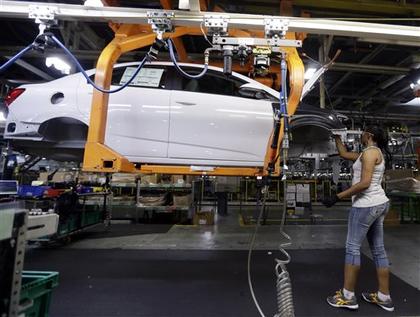-
Tips for becoming a good boxer - November 6, 2020
-
7 expert tips for making your hens night a memorable one - November 6, 2020
-
5 reasons to host your Christmas party on a cruise boat - November 6, 2020
-
What to do when you’re charged with a crime - November 6, 2020
-
Should you get one or multiple dogs? Here’s all you need to know - November 3, 2020
-
A Guide: How to Build Your Very Own Magic Mirror - February 14, 2019
-
Our Top Inspirational Baseball Stars - November 24, 2018
-
Five Tech Tools That Will Help You Turn Your Blog into a Business - November 24, 2018
-
How to Indulge on Vacation without Expanding Your Waist - November 9, 2018
-
5 Strategies for Businesses to Appeal to Today’s Increasingly Mobile-Crazed Customers - November 9, 2018
US Industrial production increases by 0.1%
Today’s Federal Reserve’s industrial production release showed that American manufacturing in July ended a seven-month stretch of cumulative inflation-adjusted shrinkage that represented its worst downtown since the partial recession year 2009.
Advertisement
The increase in industrial output was the largest gain since November and the second straight increase for the measure after starting the year with five monthly decreases. Mining, which includes oil and gas wells, rose 0.2 percent last month but remains down 2 percent over the past 12 months.
In July, the output of motor vehicles and parts jumped 10.6 percent, while production elsewhere in the manufacturing sector edged up 0.1 percent.
Capacity utilization, which measures industrial slack, increased 0.3 percentage points to 78.% in July from June. Moreover, on a year-on-year basis, real production in manufacturing, including in both durable and non-durable goods, is growing at its slowest rate in months, and industry overall has still not regained the production levels it hit just before the last recession began – more than seven years ago.
Friday’s report further revised the June readings. Other sectors making significant increases in June included wood products (up 1.4 percent), apparel and leather (up 1.0 percent), paper (up 1.0 percent), plastics and rubber products (up 1.0 percent) and chemicals (up 0.5 percent). Utility output, which often fluctuates sharply from month to month depending on weather, fell 1 percent. The so-called core PPI was up 0.9 percent in the 12 months through July.
The dollar has gained 15.7 percent against the currencies of the United States’ main trading partners since June 2014. Inflation has been persistently running below the Fed’s 2 percent target.
Advertisement
The new numbers also downgraded the capacity-utilization rate over the past several years.





























